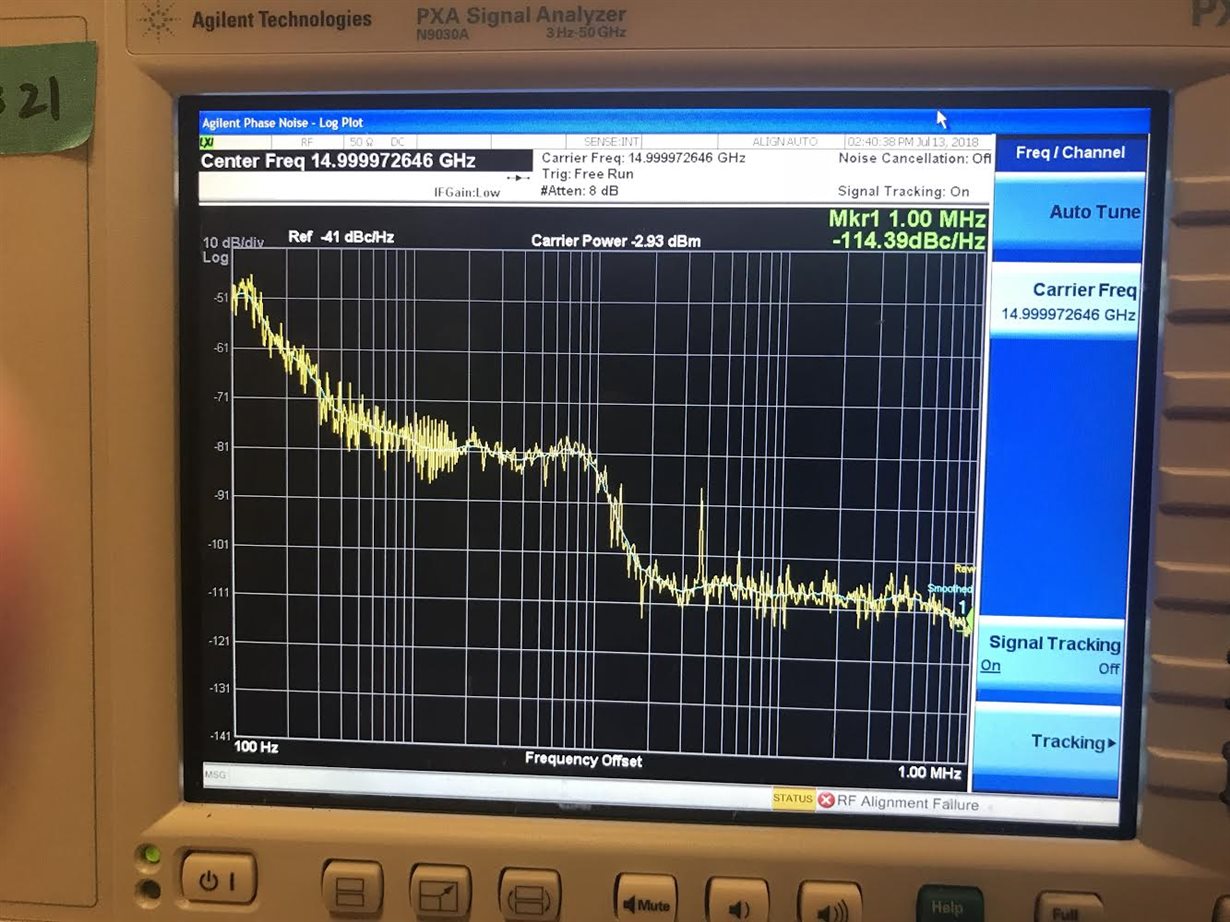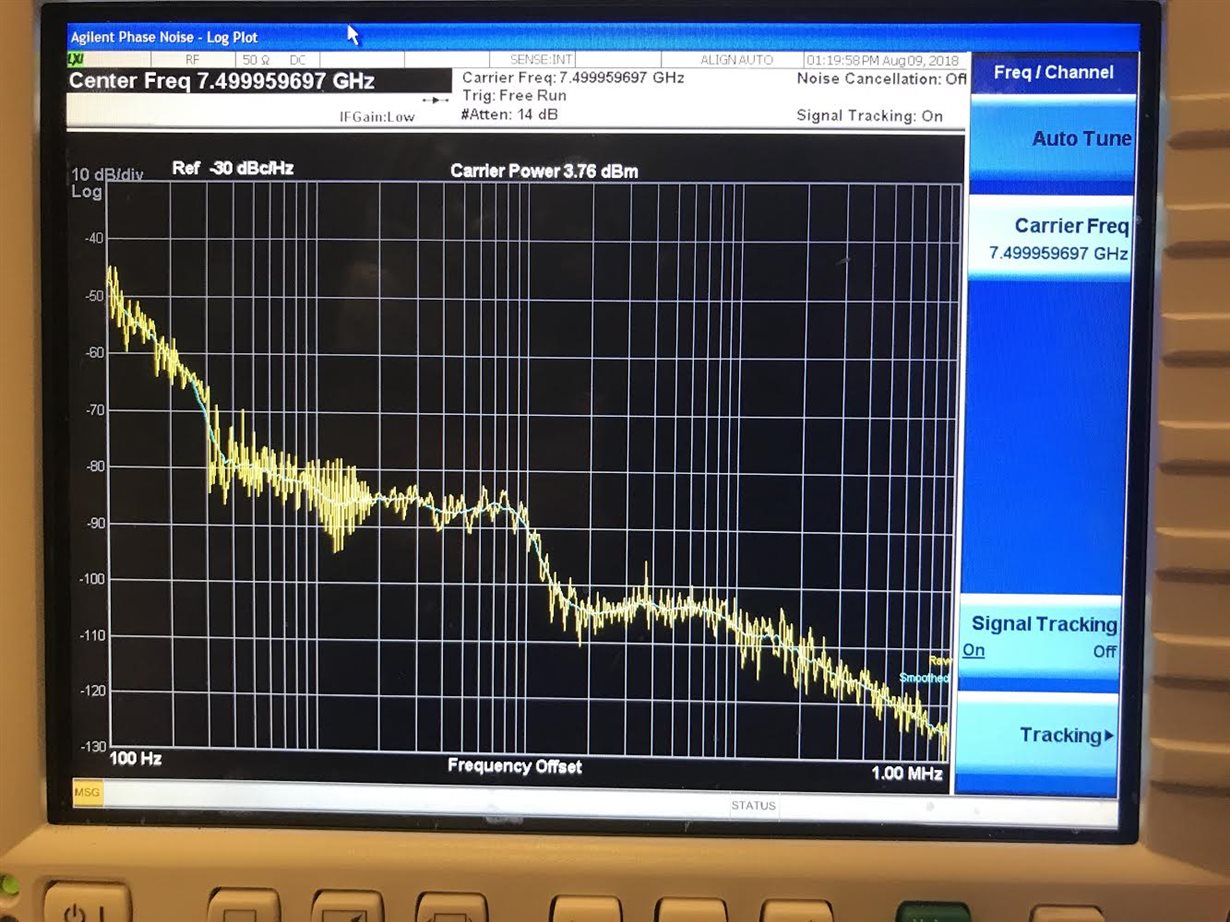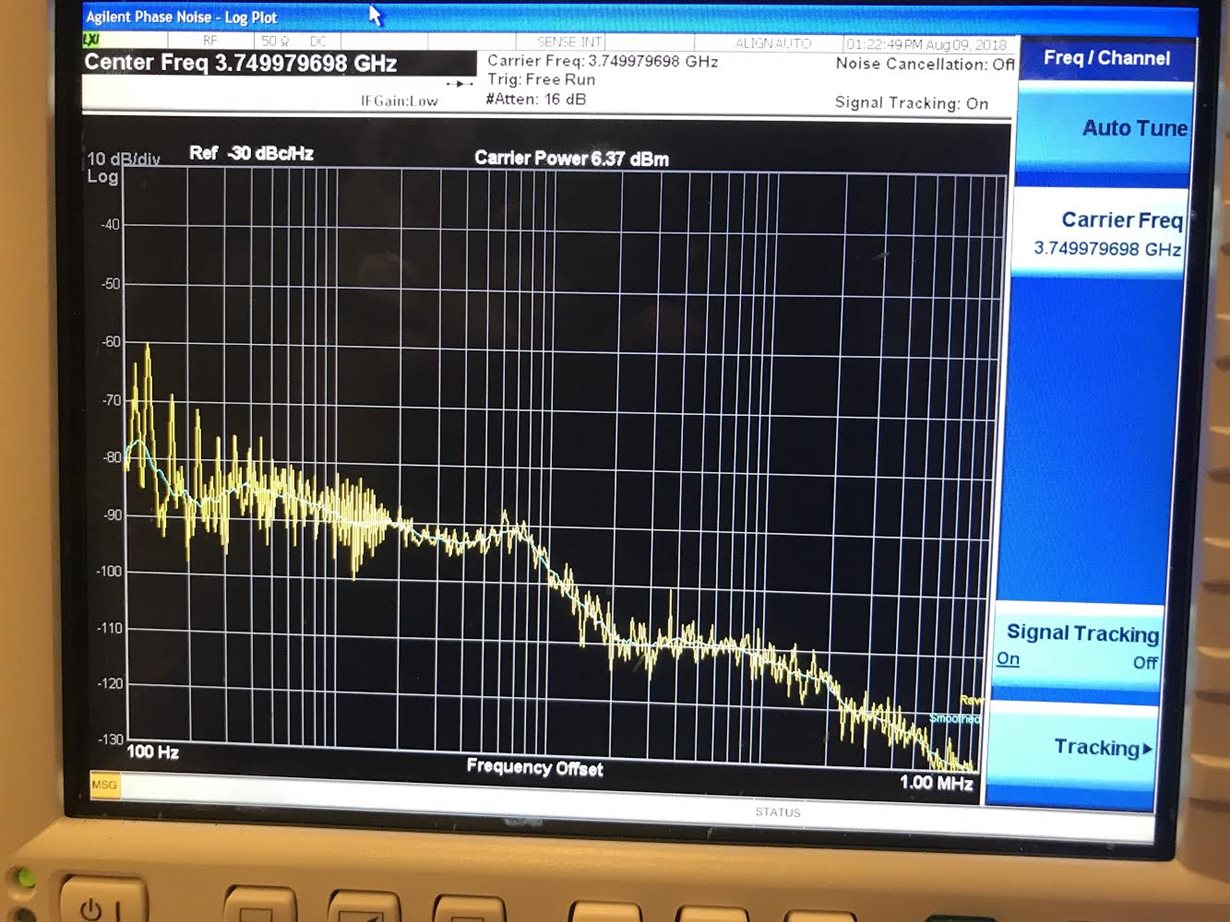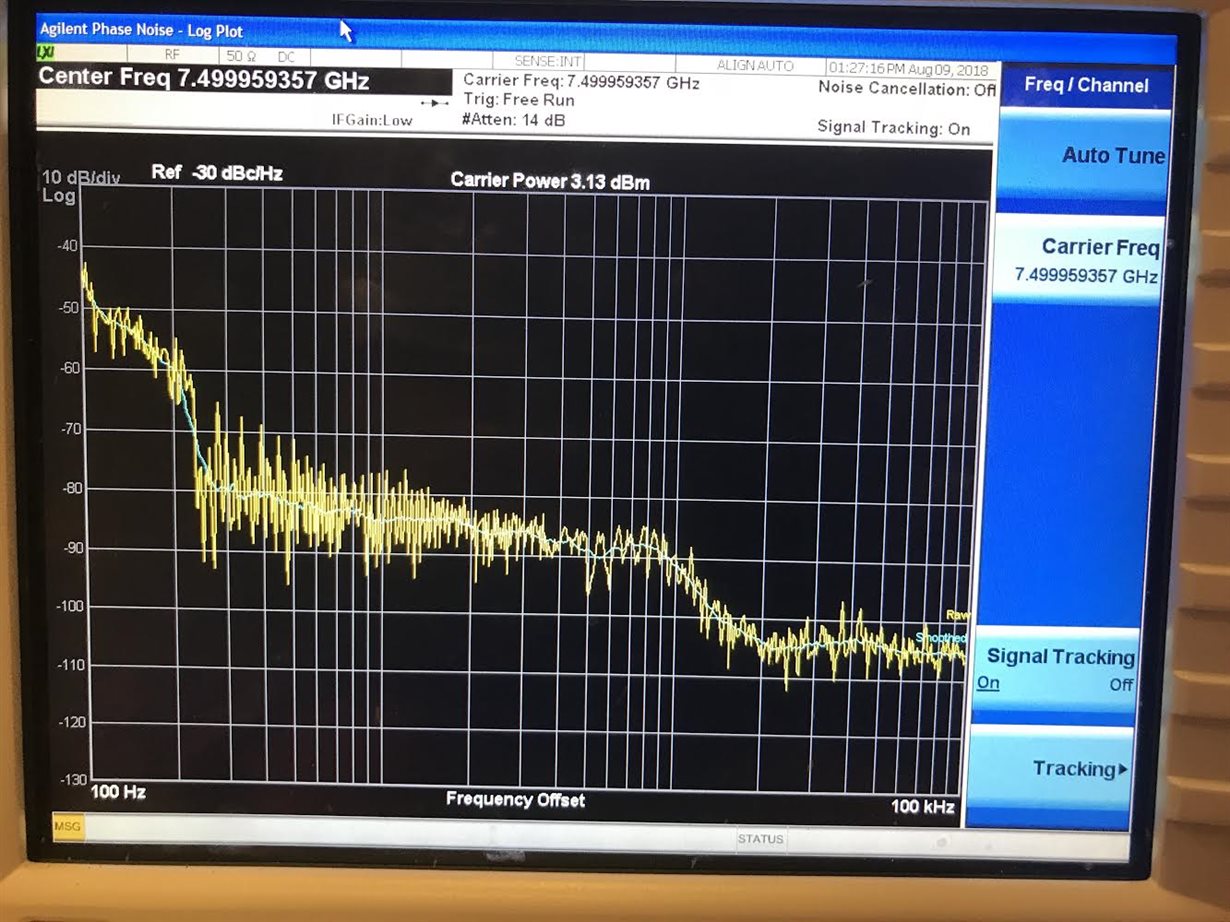Other Parts Discussed in Thread: LMX2594
We recently purchased the LMX2595EVM board and when doing a phase noise analysis we received results that were far worse than expected. The phase noise chart generated by our ESA was about 30dB worse across the nearly the entire range. Is there anything that we are doing wrong? I've attached the PLL settings we used from TICS Pro along with the chart generated. We were testing at 15GHz and using the default settings, which I believed the EVM's loop filter was optimized for. Thanks





